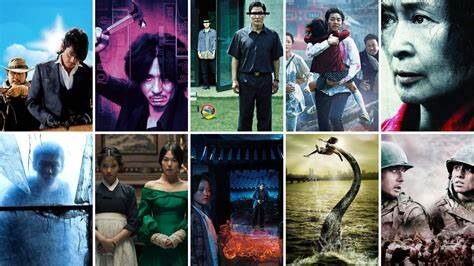
Have you ever wondered how Korean cinema rose from local storytelling to dominating global screens? Over the past decade, Korean cinema has undergone a profound transformation, capturing the hearts of audiences worldwide. With award-winning films, groundbreaking directors, and a unique storytelling style, it’s no surprise that South Korea has become a cinematic powerhouse. Whether it’s the innovative narrative structures or the unforgettable characters, Korean films have left an indelible mark on the global stage. Let’s dive deep into the fascinating journey of Korean cinema’s evolution over the last ten years, exploring its unique characteristics, challenges, and promising future.
The Rise of Global Recognition
1. The “Parasite” Effect

In 2019, Bong Joon-ho’s Parasite shattered records, becoming the first non-English language film to win the Academy Award for Best Picture. This milestone was more than just a win; it marked a seismic shift in how global audiences perceived Korean cinema. The film’s intricate portrayal of class struggle resonated universally, and its success showcased the depth of Korean storytelling. Parasite also opened doors for other Korean films to shine on international platforms, making audiences curious about the wealth of cinematic treasures South Korea had to offer.
2. Success at International Film Festivals
Korean filmmakers have consistently gained recognition at prestigious film festivals like Cannes, Berlin, and Venice. Films like Burning by Lee Chang-dong, with its hauntingly ambiguous narrative, and Decision to Leave by Park Chan-wook, with its meticulous craftsmanship, further cemented South Korea’s reputation as a hub for cinematic excellence. These accolades demonstrate the ability of Korean films to transcend cultural boundaries while maintaining a distinctly Korean essence.
3. Spotlight on Directors and Actors
Directors like Kim Jee-woon, Hong Sang-soo, and Na Hong-jin have gained cult followings for their distinctive styles. Meanwhile, Korean actors such as Song Kang-ho, Youn Yuh-jung, and Lee Byung-hun have become international icons, bridging the gap between local cinema and global stardom.
Unique Storytelling Styles
4. Exploring Social Themes
Korean cinema excels at addressing social issues with nuance and depth. From income inequality in Parasite to generational trauma in Minari, these films resonate universally while maintaining their cultural specificity. For instance, Silenced brought attention to systemic abuse in institutions, spurring real-life social change. This commitment to storytelling that matters has become a hallmark of Korean cinema.
5. Genre-Bending Masterpieces
South Korean filmmakers have a knack for blending genres seamlessly. Films like The Wailing mix horror with mystery, while Train to Busan reinvents the zombie apocalypse genre by infusing it with emotional depth. This genre fluidity keeps audiences engaged and ensures that no two Korean films feel the same. Even rom-coms like My Sassy Girl or The Beauty Inside carry deeper layers that set them apart from conventional narratives.
6. Complex Characters
Unlike traditional Hollywood narratives, Korean films often feature morally ambiguous characters. This complexity keeps audiences guessing and adds layers to the storytelling. For example, the characters in Oldboy and Memories of Murder challenge viewers to grapple with ethical dilemmas, making these stories linger long after the credits roll.
7. Emphasis on Visual Storytelling
Cinematography plays a pivotal role in Korean films, enhancing their emotional and narrative depth. Directors and cinematographers often use color palettes, framing, and lighting to evoke powerful emotions. A prime example is the use of light and shadows in The Handmaiden, which amplifies its tension and intimacy.
Technological Advancements in Filmmaking
8. Cutting-Edge Visual Effects
South Korea has embraced advanced CGI and visual effects, as seen in movies like Space Sweepers. These technological advancements have made it possible to create visually stunning narratives that rival Hollywood blockbusters. Additionally, films like The Host demonstrated early on that Korean cinema could excel in creature features, blending practical effects with CGI seamlessly.
9. High-Quality Production Values
From cinematography to sound design, the production quality of Korean films has skyrocketed. Directors like Kim Jee-woon and cinematographers like Hong Kyung-pyo have set new benchmarks for excellence. This focus on quality is evident in films like I Saw the Devil, where meticulous production design enhances its chilling atmosphere.
10. Innovations in Film Editing
Editing techniques in Korean cinema often contribute to its distinct storytelling style. Rapid cuts, slow-motion sequences, and innovative transitions, as seen in Snowpiercer or The Man From Nowhere, heighten the emotional impact and create a dynamic viewing experience.
The Role of OTT Platforms
11. Netflix and the Global Audience
OTT platforms like Netflix have played a significant role in bringing Korean cinema to international audiences. Movies like Time to Hunt and The Call gained worldwide attention thanks to these platforms. Netflix’s investment in Korean content, including films and original series, has amplified the reach of Korean storytelling to new demographics.
12. Expanding Accessibility
Streaming services have also made it easier for audiences to explore older Korean films, fostering a deeper appreciation for the country’s cinematic heritage. Films like Spring, Summer, Fall, Winter… and Spring and Oasis are now readily available, introducing new generations to timeless classics.
13. Global Success of Korean Original Content
Original Korean films and series on OTT platforms have become cultural phenomena. From Sweet Home to Squid Game, these productions highlight the versatility and creative potential of Korean creators. The success of these projects has spurred more investments in high-budget productions with a global focus.
The Impact of K-Drama on Cinema
14. Cross-Pollination of Talent
The popularity of K-dramas has paved the way for actors like Gong Yoo, Park Seo-joon, and Bae Doona to transition seamlessly between TV and film, enriching both mediums. This synergy has created a thriving entertainment ecosystem where actors and filmmakers continually push creative boundaries.
15. Shared Narrative Techniques
Korean dramas and films often share storytelling techniques, such as cliffhangers and intense emotional arcs, creating a cohesive entertainment ecosystem. This overlap allows fans of one medium to transition easily into the other, broadening the audience base.
16. The Role of Music and Soundtracks
The integration of music and soundtracks, a hallmark of K-dramas, has influenced Korean cinema as well. Memorable scores like the haunting tunes in Oldboy or the emotionally charged melodies in A Werewolf Boy elevate the cinematic experience.
Challenges Faced by Korean Cinema
17. Balancing Art and Commerce
As Korean cinema gains global recognition, there’s a growing tension between creating artful narratives and producing commercially viable films. Striking this balance remains a challenge. While blockbuster hits like Peninsula draw crowds, more nuanced films like House of Hummingbird struggle for similar visibility.
18. Navigating Cultural Translation
While Korean films are celebrated globally, cultural nuances can sometimes get lost in translation. Filmmakers need to navigate these challenges to maintain authenticity. Subtitles and dubbing efforts play a crucial role in bridging these gaps, though they can’t always capture the full essence of the original language.
19. Industry Pressures and Competition
The rapid success of Korean cinema has brought increased competition and pressure on filmmakers to deliver hits. This environment can sometimes stifle creativity, as studios prioritize market trends over artistic innovation.
The Future of Korean Cinema
20. Rising Stars and New Voices



A new generation of filmmakers, such as Yoon Ga-eun and Kim Bora, is bringing fresh perspectives to Korean cinema. Their innovative storytelling promises a bright future. Young directors are also experimenting with new formats, such as virtual reality (VR) films, to push the boundaries of the medium.
21. Expanding International Collaborations
Collaborations with global studios and talent are on the rise. This trend not only broadens the appeal of Korean films but also enriches their narratives with diverse influences. Partnerships with Hollywood, Bollywood, and other industries promise a new era of cross-cultural storytelling.
22. Embracing Sustainability in Filmmaking
With a growing focus on environmental sustainability, Korean cinema is exploring green filmmaking practices. From reducing waste on sets to incorporating eco-friendly themes into narratives, this shift reflects the industry’s commitment to global issues.
READ ALSO:
- Royal Regalia: A Timeless Tapestry of Power and Elegance
- Korean Celebrities Who Are Also Musicians
- The Most Iconic Korean Movie Soundtracks
- Rising Korean Actors to Watch in 2025
Conclusion
From humble beginnings to global acclaim, Korean cinema’s journey over the past decade has been nothing short of extraordinary. Its ability to blend cultural specificity with universal themes, coupled with technological innovation and exceptional storytelling, has set a new standard in global filmmaking. As we look to the future, one thing is clear: the golden age of Korean cinema is here to stay. With rising talents, expanding global partnerships, and an unwavering commitment to storytelling, the next decade promises even greater achievements for Korean cinema.
FAQs
1. What makes Korean cinema unique?
Korean cinema stands out for its complex characters, genre-bending narratives, and ability to tackle social issues with nuance and depth.
2. Which Korean film won the first Oscar for Best Picture?
Parasite by Bong Joon-ho won the Oscar for Best Picture in 2019, making history as the first non-English language film to do so.
3. How has Netflix influenced Korean cinema?
Netflix has expanded the global reach of Korean cinema by making films accessible to international audiences and investing in original Korean productions.
4. Who are some notable directors in Korean cinema?
Prominent directors include Bong Joon-ho, Park Chan-wook, Kim Jee-woon, and Lee Chang-dong, each known for their unique storytelling styles.
5. What is the future of Korean cinema?
The future looks promising with rising filmmakers, increased international collaborations, and continued innovation in storytelling and technology.
6. Why are Korean films so emotionally impactful?
Korean films often delve deeply into human emotions, exploring themes like love, loss, and redemption with raw intensity, making them resonate on a universal level.


